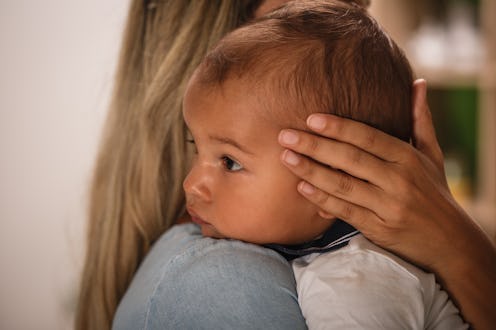Life
What You Need To Know About This New Birth Trend

Vaginas are often compared to flowers or plants (thank you, Georgia O’Keeffe), but that doesn’t mean there are seeds up there — right? You may then wonder, if it has nothing to do with gardening, what is vaginal seeding? As it turns out “nature’s pocket” is full of vaginal microbiota (good bacteria) that gets transferred onto a baby during the birthing process, when it enters the world through the birth canal. But, since babies born via cesarian-section are removed through the mother's abdomen and do not come into any contact with the vagina, they do not receive any possible benefits from the early exposure to this bacteria.
Enter the “vaginal seeding” technique which attempts to mimic that microbe-filled environment post-delivery. According to British Medical Journal , the process involves a saline-soaked gauze swab being placed inside the mother’s vagina before the cesarean surgery. It thus absorbs the fluids and microbiota of that environment. After the baby is delivered, the swab is taken from a sterile holding place and applied to the baby’s skin and face. With nearly a third of children being delivered by cesarean in the US, why might this process only be gaining traction now?
British Medical Journal states that infants born vaginally have bacteria that is similar to the mother’s vagina, whereas those born through the cesarean section resemble the mother’s skin. And this difference in the child’s microbiome could affect the child’s health going forward.
Research shows that our microbe makeup is essential to our immune systems — helping us with everything from digesting food to aiding our body with infection. Vaginal seeding hopes to restore the "natural" microbiota to the baby, and reduce any future risks. Recent studies have shown that babies delivered through C-section have a slightly increased risk of suffering from allergies, asthma, obesity, and autoimmune diseases such as eczema, type 1 diabetes, celiac disease and gastroenteritis. These diseases are also linked to changes in microbiota, affirms British Medical Journal.
And with the bevy of media attention, the “vaginal seeding” technique has becoming more popular, though its true benefits remain unproven. Currently, there is only one clinical trial looking into “vaginal seeding” sponsored by the NYU School of Medicine and they hope to finish initial stage of research by 2017. While parents will do anything to make their baby stronger and give them a better start to life, there are certain dangers to this simple procedure that make doctors wary of its demand.
When a baby is born vaginally it is exposed to the good, but possibly also any harmful agents that the mom might be carrying. Not all countries require testing for pathogens during pregnancy, though it is recommended. If newborns are exposed to vaginal pathogens they may develop infections and cause serious health problems. Approximately a quarter of the female population carry Group B Strep bacteria, which under normal circumstances is not harmful, but could cause neonatal sepsis.
It is also possible to transfer the herpes virus, chlamydia, and gonorrhea to an infant vaginally, which means vaginal seeding could cause exposure as well. The Guardian mentions that since it can be difficult to find a doctor who will perform the procedure in the hospital, some opt to do it themselves at home. Carolyn Weiss, a pregnant supporter of vaginal seeding interviewed by The Guardian stated, “Our doctor is generally supportive of the idea, but he won’t do it himself... That task will fall to my husband.”
The British Medical Journal believes women have a right to their autonomous choice if they are well-informed about the liabilities, though they do not believe it is necessarily worth it: “We have advised staff at our hospitals not to perform vaginal seeding because we believe the small risk of harm cannot be justified without evidence of benefit.” They instead encourage a shift of focus onto breastfeeding which also helps build a healthy microbiome in infants, and allows their "garden" of good gut bacteria to grow.
Images: fotostorm/E+/Getty Images, giphy